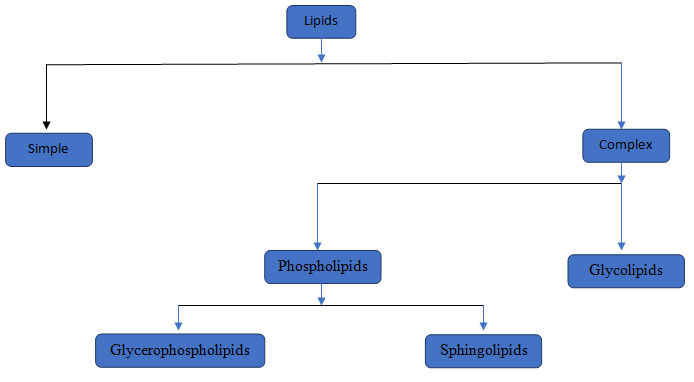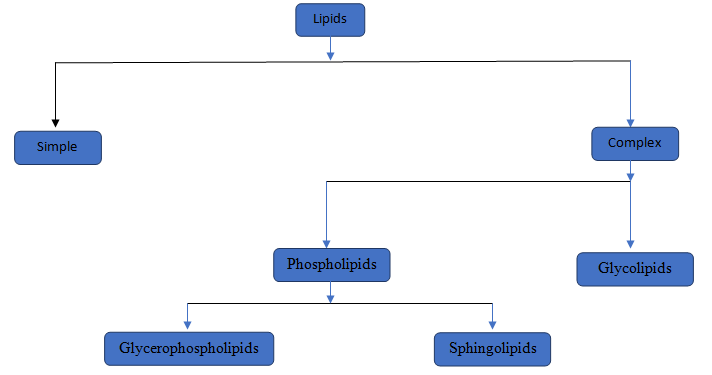
(a)
Interpretation:
The category to which the given lipid structure belongs should be identified.
Concept Introduction:
Lipids are a type of chemical substances which is not soluble in water but soluble in non-polar solvents. Lipids are of two type simple lipids and complex lipids. Simple lipids are those where Glycerol attached with fatty acid. In complex lipids there are two major lipids i, e, Phospholipids and Glycolipids.

(b)
Interpretation:
The components of the compound should be determined.
Concept Introduction:
Lipids are a type of chemical substances which is not soluble in water but soluble in non-polar solvents. Lipids are of two type simple lipids and complex lipids. Simple lipids are those where Glycerol attached with fatty acid. In complex lipids there are two major lipids i,e, Phospholipids and Glycolipids.

Trending nowThis is a popular solution!

Chapter 20 Solutions
Introduction To General, Organic, And Biochemistry
- 22-53 Do iron and zinc ions play role in protein structure? If so, what is the role for either or both?arrow_forward22-44 How can a protein act as a buffer?arrow_forward22-65 (a) What is the difference in the quaternary structure between fetal hemoglobin and adult hemoglobin? (b) Which can carry more oxygen? (c) What would the oxygen saturation curve of fetal hemoglobin look like compared to that of myoglobin and regular adult hemoglobin?arrow_forward
- 22-97 Gelatin is derived from collagen by denaturation. Is a gelatin dessert likely to be a good source of dietary protein?arrow_forward22-31 A polypeptide chain is made of alternating valine and phenylalanine. Which part of the polypeptide is polar (hydrophilic)?arrow_forwardneed help with D)Lipidarrow_forward
- Question 25 Which of the following lipids are water-repellent with protective coating properties Phospholipids/sphingoglycolipids/cholesterol OBiological waxes Triacylglycerols Steroid hormones Bile acids No new data to save Last checledarrow_forwardExplain Structure activity relationship of dacarbazine?arrow_forwardAnswer the following questions on the basis of the free energies of formation at 25°C shown in the table at the top of the next page: (a) Does the peptide bond between alanine and glycine form spontaneously under standard conditions?arrow_forward
- Think about it: Since hard-shelled organisms evolved about 550 million years ago, billions of tons oflimestone rock have been produced from their shells. Limestone is made of calcium carbonate, with theformula CaCO3arrow_forwardGeneral reactions for drugs belonging to the group of aliphatic amino acids: A) with iodine solution B) With ninhydrin C) With copper sulfate in an alkaline environment D) With resorcinolarrow_forwardWhich of the following is an L-amino acid?arrow_forward
 Introduction to General, Organic and BiochemistryChemistryISBN:9781285869759Author:Frederick A. Bettelheim, William H. Brown, Mary K. Campbell, Shawn O. Farrell, Omar TorresPublisher:Cengage Learning
Introduction to General, Organic and BiochemistryChemistryISBN:9781285869759Author:Frederick A. Bettelheim, William H. Brown, Mary K. Campbell, Shawn O. Farrell, Omar TorresPublisher:Cengage Learning Introductory Chemistry: An Active Learning Approa...ChemistryISBN:9781305079250Author:Mark S. Cracolice, Ed PetersPublisher:Cengage Learning
Introductory Chemistry: An Active Learning Approa...ChemistryISBN:9781305079250Author:Mark S. Cracolice, Ed PetersPublisher:Cengage Learning World of ChemistryChemistryISBN:9780618562763Author:Steven S. ZumdahlPublisher:Houghton Mifflin College Div
World of ChemistryChemistryISBN:9780618562763Author:Steven S. ZumdahlPublisher:Houghton Mifflin College Div


